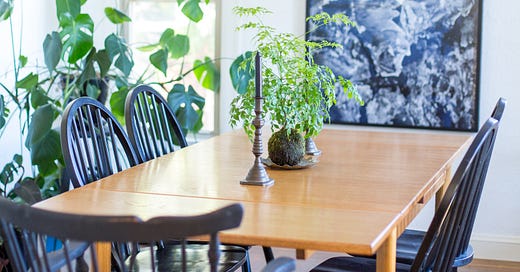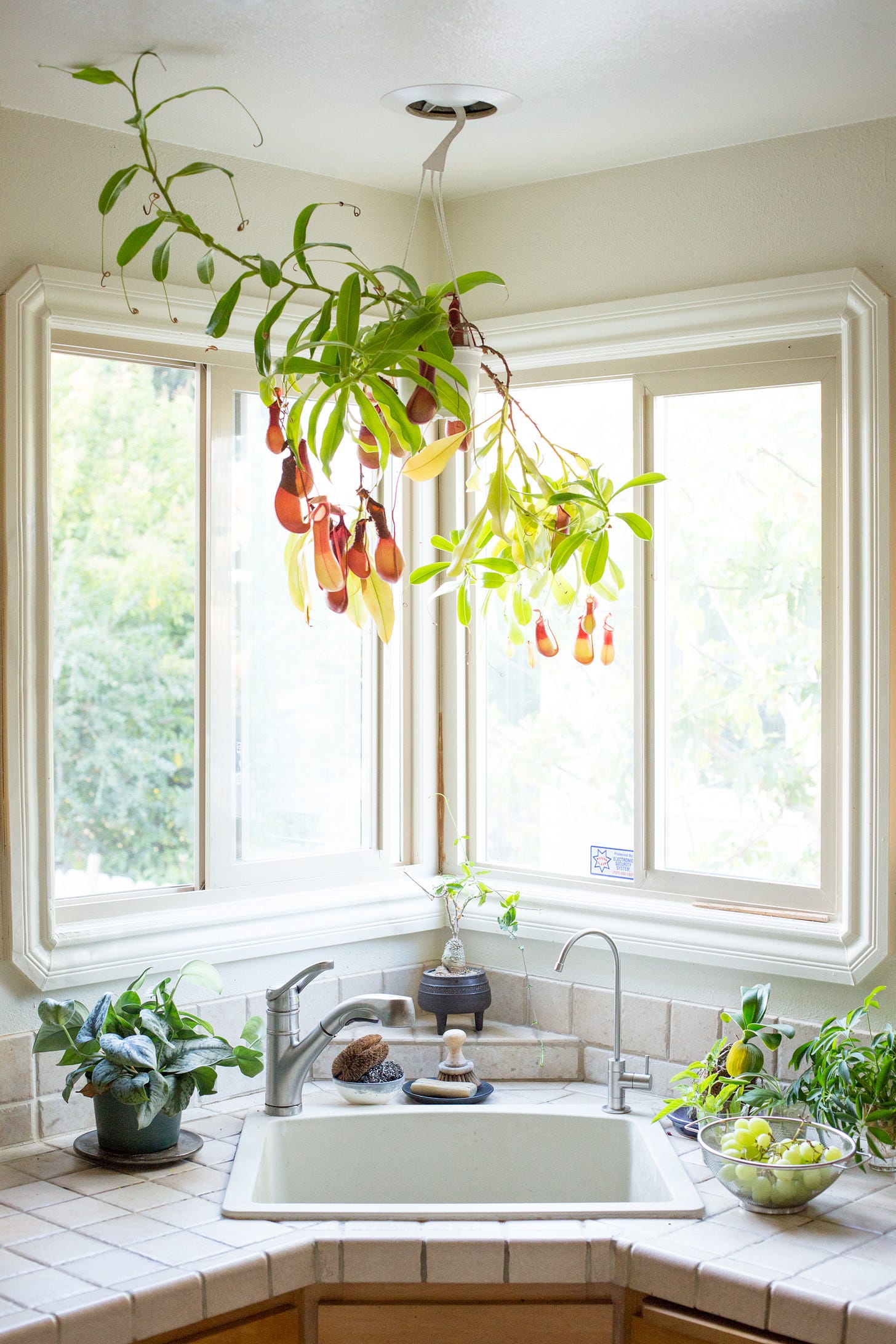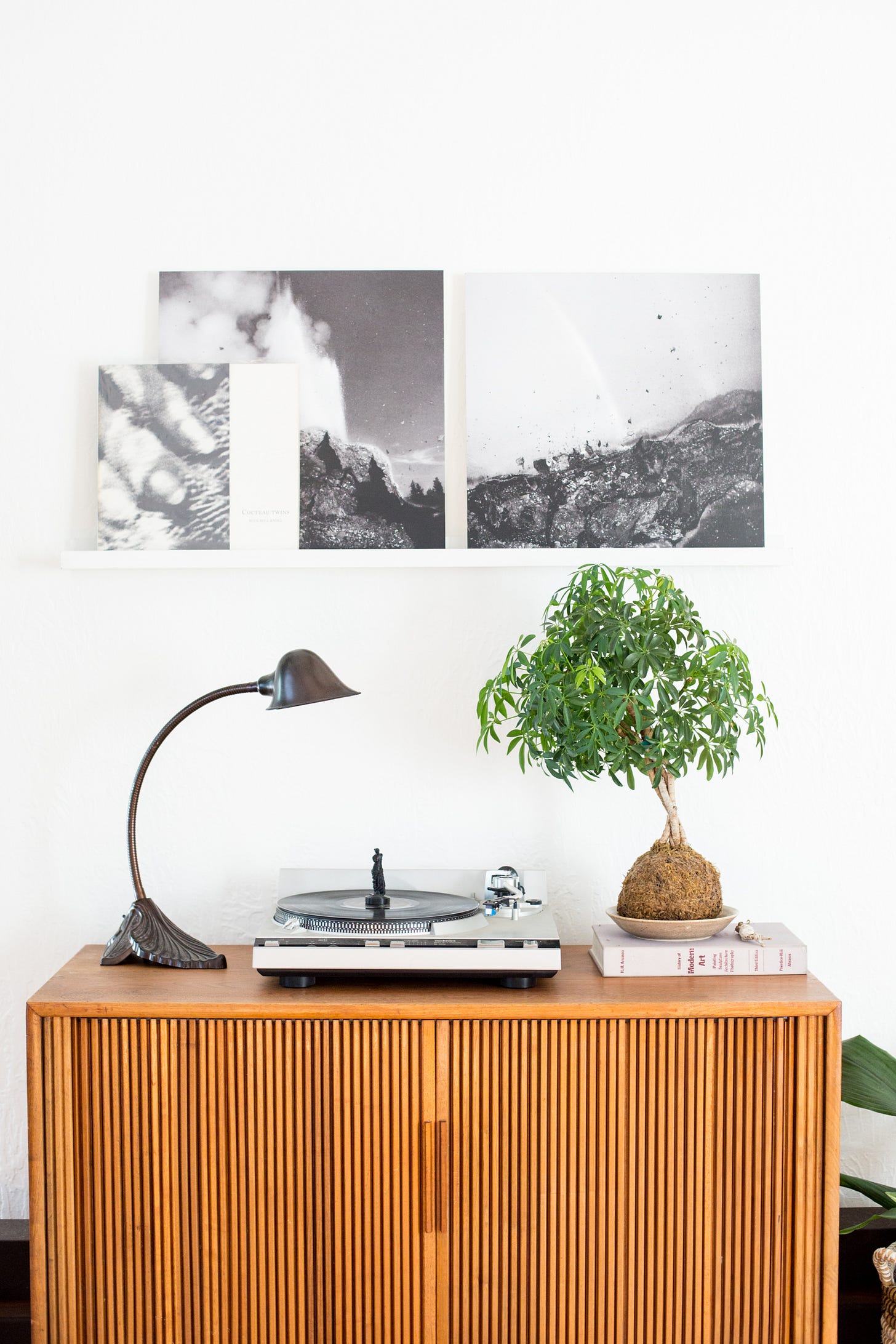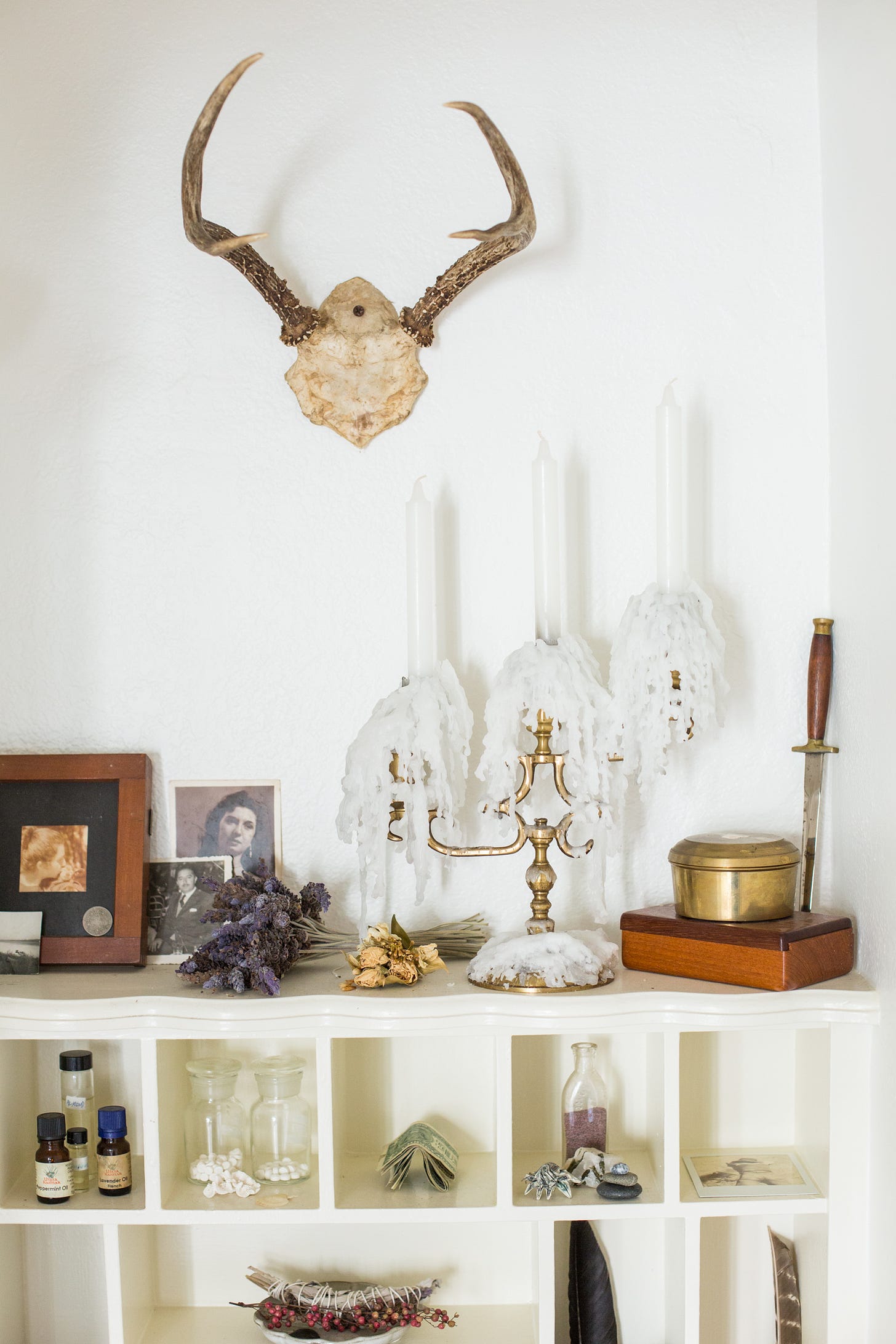Good morning,
The Bay Area artist Bessma Khalaf is known for her humorous, performative, durational films and her dark, mesmerizing photographs. In one of Bessma’s staged, sparse, ritualistic videos, the artist perches on a horse made of ice until it meets its maker—the sun. In others, she knits yarn pulled directly from her mouth, or stealthily stalks a dry hillside like a medieval, brave shepherdess, sans sheep. I like to think of Bessma as a postmodern silent-film-star from the past, or a witchy warning from the future. Often employing various techniques of degradation (burning, exploding, melting, decaying, corroding), her art work engenders objects and landscapes more mythical and uncanny, be they in a state of evolution or dissolution.
Bessma was born in Iraq in the late seventies and on the cusp of her teens, her family immigrated to America, the country that was corroding their country of origin. A sardonic, explosive relationship to the American landscape is implicated and tested in her work. Recently Bessma has steered out of the fine-art realm, and become an expert in the Japanese art of kokedama. Bessma runs a shop in downtown Oakland where she sells plants and teaches other kokedama-curious people about how to tend to these particular, string-wrapped and moss-bound plants.
Bessma and her husband live in a Spanish colonial home in Vallejo, California, with eighty-eight stunning kokedamas inside and a wild garden outside. The home, with its 1930’s architectural underpinnings, is minimally furnished with a few textiles, large-scale artworks and simple, lean furnishings. The space is amazingly monochromatic (in the same black and white palette running though Bessma’s visual art). However, there are two colors running through each room: green—the color of growth, and brown—the color of roots.
Hi Bessma. Can you concisely tell me about your home-aesthetic in 3 phrases?
Indoor jungle. Restrained with color. Bright and airy.
I’m curious about tempo of domestic practices. What’s the fastest thing you do at home and what’s the slowest thing?
The fastest thing would be the dishes, since I hate seeing them in the sink. The slowest is gardening, because I never want it to end.
I love that you have a carnivorous plant dangling over your kitchen sink, brilliantly placed to gobble up any offending fruit flies right where they like to congregate. Your house feels like a clean, curated jungle, where the plants are really thriving under your careful tending. And almost magically so, some even float in space from invisible fishing line, spinning with a breeze, which I cannot say enough about. Can you tell me about kokedamas and how your collection of them began?
Kokedama 苔玉 (Ko-Ke-Da-Mah) is a Japanese gardening technique that originated from bonsai. A plant is placed into a ball of soil, then covered in moss and secured with string, making it self contained and doing away with pots all together. It is a minimal plant aesthetic that showcases the plant and its personality. I encountered my first kokedama at a small Japanese shop; I was instantly fascinated. I love the idea of keeping plants alive with only natural materials. Something about that is so sweet and poetic. As they grow into little, living sculptures, they take on their own personality. How can anyone who loves plants and art not fall for that?
Tell me about Walter, in the corner of the living room, who has a ‘nametag’ and handwritten note in his pot, stating “not for sale.”
Ah yes, Walter is very special to me. He is a lovely cutting from a white ghost cactus, a Euphorbia Lactea 'Variegata.’ He was given to me twenty years ago, by my photography professor and mentor Watler Cotten, who’s passed on. That cactus will always remind me of him. Historically I kept Walter at my plant shop, Of Soil And Moss. Since he was so impressive I was constantly getting offers to sell him. I always laughed and said NO WAY, you can’t put a price on something like that. I just forgot to take his tag off when we brought him home.
Are you attached to your objects? Why or why not?
I am definitely attached to my plants. I have had them so long, it feels like they are part of the family.
Is there a place other than your residence that you also consider home?
Yes, both my studio and redwood forests.
What home-based architectural, design or atmospheric features do you find crucial to live with?
Light! Lots of beautiful light. I guess that’s partly from being a photographer. Also hardwood floors are a must. They make a house feel so warm and visually pleasing.
As a visual artist, you work in black and white, almost exclusively omitting color, whether your medium is wood (by burning and blackening it) video, photography or a silk screen-print. Was furnishing your home in all black, white and neutral objects and art conscious or unconcious?
It was a conscious decision to furnish our home mostly in black and white. I like including a lot of black but not letting it feel too goth. I’m not sure why I do this: I just find the contrast of black against stark white very pleasing. In photographs, a black and white palette keeps the image pure and uncluttered and lets the composition and subject be the main draw.
Your husband is home with you just a handful of days each month. What’s it like to share a home part-time with your partner?
It makes me very sad. But it’s something we have to deal with for now. It makes our overlapping time at home very special. We tend to be reluctant to do anything on Sundays that he’s here as that’s my day off from my shop. We call them sacred Sundays and spend the day just enjoying being home and in each other's company. We cook brunch, usually frittatas or savory oatmeal, garden, and just relax together. We also love reading together and to each other as well; I’m a fantasy and sci-fi nerd. He’s becoming quite the cocktail master; in the evening he's always making us some new concoction to sip while we listen to records in the living room: lately The Cocteau Twins, The Cure, Dead Can Dance, The Beatles and old James Bond soundtracks. It feels like being in another era , before TV was the center of attention. It’s lovely.
What do you think homes of the future will be like?
Hopefully they will be integrated in the landscape with a focus on more indoor-outdoor space, including garden space!
What are you most grateful for about having a home?
Having a home is a place to nurture and grow. It's a place to feel safe and do what I want to do without feeling judged. It’s also a place where I can experiment with different mediums. To me, making a home is akin to making art.
What’s your favorite home-related resource?
Our house was built in 1936 so it can be tricky to find the right objects. I love Urban Ore in Berkeley, such a great place to find old fixtures and period furniture.
Do you have any boundaries/rules at home that are non-negotiable?
No television in the bedroom or living room. I like having it in the office/guest room where it’s not the center of attention.
What item or collection in your home would you give to your dearest friend in your will?
My plants of course, especially Walter the ghost cactus.
Describe your home in 5 words.
Mediterranean. Bright. Warm. Peaceful. Verdant.
Describe your dream home in 5 words.
Actually on the Mediterranean. Bright. Warm. Peaceful. Verdant.
Delving Deeper…
Bessma’s plant shop, which specializes in the art of kokedama, Of Soil And Moss, is in downtown Oakland. You could consider offering living gifts this holiday month. Each kokedama is ripe with personality it’d be fun to match particular specimens to your particular loved ones. Occasionally, Bessma teaches workshops to small groups (ask her about having one at your space if you have a garden/driveway/patio in the Bay Area). She may even be open to customizing a selection of plants appropriate to your living (or work) space and its particular light exposure. Enjoy Of Soil And Moss on Instagram images which are, of course, immaculately shot due to her keen eye.
Consider Home…
as the famous mid-century Modern architect Richard Neutra did:
“Human habitat in the deepest sense is much more than mere shelter. It is the fulfillment of the search—in space—for happiness and emotional equilibrium. It is a matter of settling down at one point in the wide open spaces—a voluntarily restricted spot to come home to—to be with one’s belongings and with those closest to one’s self.”
Etymology Interlude
ecology (noun)
From 1873, oecology, the "branch of science dealing with the relationship of living things to their environments," was coined by the German zoologist Ernst Haeckel.
The root word ‘eco’ was originally spelled ‘oeco’ and was an abbreviation of Ökologie, from the Greek word oikos, meaning "house, dwelling place, habitation.” The addition of -logy comes from ‘logia’ meaning ‘the study of’ to form 'ecology.
The word ecology is simply: the study of our dwelling place, or home. Our environments, habitats, landscapes, geographies—however we choose to title them, are our communal home, the place that cannot be re-placed, the sole place we belong.
Consider home…
A place of emotional equilibrium. More often than not, it is through ritual and repetition that balance is reestablished when one feels like a malnourished plant. My recommendations this month are inspired by the three pleasures I engage with daily to rebalance my eyes, nerves and gut: films, music and home cooked meals. The following recommendation are, in some form, on regular rotation on Bessma’s turntable, skillet and movie cue.
EYES: Wintery, full of dress up and ghosts, dark and mostly just hilarious, this spoof on a vampire film is one of both Bessma and my favorites, and can be watched for free on Kanopy: What We Do In The Shadows.
NERVES: The Cocteau Twins Heaven Or Las Vegas. Turn it up, it is so beautiful and makes you feel utterly limitless.
GUT: Since Bessma told me frittatas are her and her husband’s weekend breakfast that can be made with almost any vegetable leftovers, I wanted to share this Japanese version of a frittata, Okonomiyaki, which is truly one of the easiest, healthiest and most often cooked things in my repertoire. It’s so divine with spicy mayo, and I tend to add a lot of scallions to mine so it’s a bit like a scallion pancake as well. It’s such a wonderful way to get cabbage, one of the most gut-beneficial prebiotic foods, into your diet. I could write a whole cookbook on the humble cabbage family! While you’re getting hungry, check out Food Waste Feast, a lovely website inspired by cooking with rather under-utilized ingredients and kitchen ‘scraps’.
This marks one year of REALM’s monthly interviews and photo essays featuring the personal living spaces of artists that inspire me. I’ll be taking a break from the regular ‘programming’ to reassess what I’d like to do with REALM down the road.
In the meantime, if you would like your home or creative space documented privately, for your personal or work purposes, please reach out; I’m available for photographic commissions throughout Northern CA, parts of the Pacific Northwest, and in Los Angeles.
If you have a paid subscription, you will not be charged further. If you have any questions, let me know. It’s time for me to hibernate and reconsider what’s next for my creative projects—perhaps a book, a collection of recipes, a set of more focused interviews, working on photographic film again, or designing a dream home—behind the scenes. I’ll keep you updated.
Having so many subscribers tune in to these conversations and images has been truly meaningful to me.
Sending warmth until the flowers bloom again,
Airyka
















